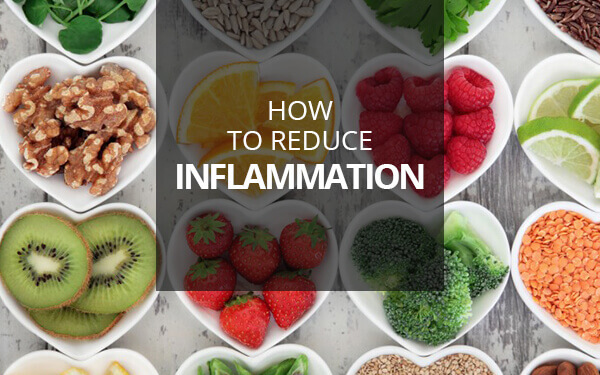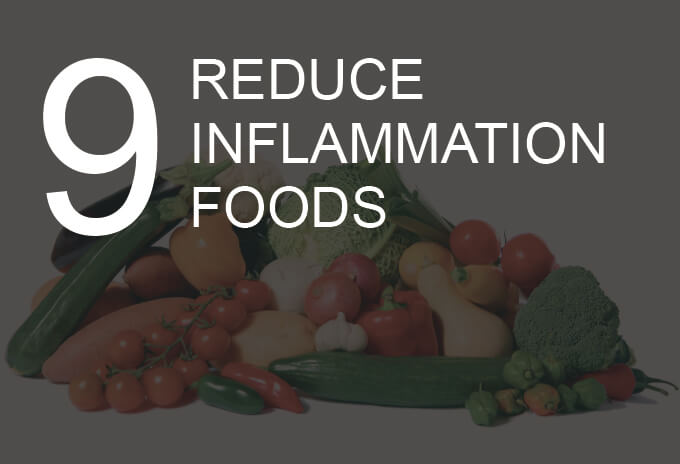Some Ways to Reduce Inflammation
The body’s immune system is the key to a fit and healthy life. While Reduce Inflammation is part of that immune response, too many causes problems in the forms of illness and disease. That’s why it’s important to eat a well-balanced diet that includes inflammation reducing foods.
British author Henry James once wrote-
American-born British author Henry James once wrote, “Americans will eat garbage provided you sprinkle it liberally with ketchup.” That’s so true, and the problem is that the “garbage” selection of-of widely available fast foods do not fight inflammation.
Types of food that reduce inflammation are low in sugar and saturated fats. When foods have too much of these items, they invite inflammation which leads to fatigue, joint pain, blood vessel damage, and other health problems. It is important to know the difference between the two types (www.nutritionfacts.org).
However, you can curb inflammation and stay on the path to a fit and healthy life by eating the right types of foods. And access to these foods is as close as your local food market or grocery store. Here are a dozen inflammation reducing foods that you can enjoy!
Reduce inflammation foods-
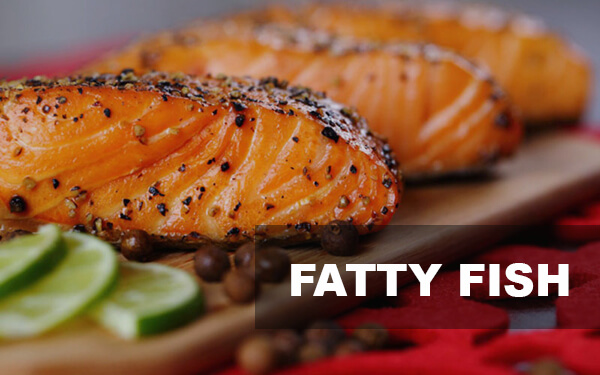 Fatty Fish – While a diet high in trans fat is bad, you need omega-3 fatty acids because they help fight inflammation. For the most benefits, eat fish several times a week and prepare it in healthy ways such as baked, broiled, or grilled. Fatty fish typically are cold-water fish. You have many good choices when it comes to fatty fish. The American Dietetic Association recommends-Salmon, Tuna, Trout, Herring, Sardines, Mackere……Three ounces of salmon alone offers about 1 gram of EPA and DHA. If these fish aren’t to your taste, you can also try white fish such as halibut or trout. A 3.5-ounce serving of trout offers about 1 gram of EPA, plus DHA.One meta-analysis of nearly 900,000 women has linked a higher consumption of oily fish with a lower risk of breast cancer. However, another team found that men with high quantities of omega-3 oil in their blood had a higher risk of prostate cancer.
Fatty Fish – While a diet high in trans fat is bad, you need omega-3 fatty acids because they help fight inflammation. For the most benefits, eat fish several times a week and prepare it in healthy ways such as baked, broiled, or grilled. Fatty fish typically are cold-water fish. You have many good choices when it comes to fatty fish. The American Dietetic Association recommends-Salmon, Tuna, Trout, Herring, Sardines, Mackere……Three ounces of salmon alone offers about 1 gram of EPA and DHA. If these fish aren’t to your taste, you can also try white fish such as halibut or trout. A 3.5-ounce serving of trout offers about 1 gram of EPA, plus DHA.One meta-analysis of nearly 900,000 women has linked a higher consumption of oily fish with a lower risk of breast cancer. However, another team found that men with high quantities of omega-3 oil in their blood had a higher risk of prostate cancer.
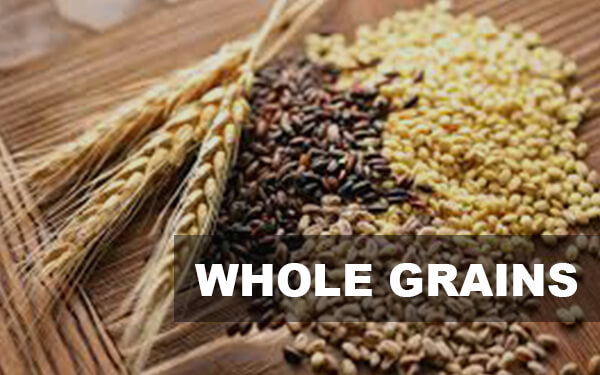
Whole Grains – Always select whole grains over refined or white bread, cereal, rice, and pasta. Whole grains provide a stronger fight against inflammation because they are rich in fiber and have less added sugars.Whole grains are hearty, flavorful and filling. Choose from brown rice, oatmeal, corn, whole-wheat bread, barley, bulgur, kasha, millet, sorghum, farro and more. The fiber-rich bran, nutrient-packed germ and starchy endosperm are all natural parts that remain in whole grains. Refined grains lack the bran and germ, while whole grains provide more nutrition, fiber and health-promoting phytochemicals.
|
Amount Per |
| Calories 265 |
| % Daily Value* | |
| Total Fat 4.2 g | 6% |
| Saturated fat 0.9 g | 4% |
| Polyunsaturated fat 1.9 g | |
| Monounsaturated fat 0.8 g | |
| Trans fat 0 g | |
| Cholesterol 0 mg | 0% |
| Sodium 381 mg | 15% |
| Potassium 230 mg | 6% |
| Total Carbohydrate 43 g | 14% |
| Dietary fiber 7 g | 28% |
| Sugar 6 g | |
| Protein 13 g | 26% |
| Vitamin A | 0% | Vitamin C | 0% |
| Calcium | 10% | Iron | 13% |
| Vitamin D | 0% | Vitamin B-6 | 15% |
| Vitamin B-12 | 0% | Magnesium | 19% |
| Vitamin A | 0% | Vitamin C | 0% |
| Calcium | 10% | Iron | 13% |
| Vitamin D | 0% | Vitamin B-6 | 15% |
| Vitamin B-12 | 0% | Magnesium | 19% |
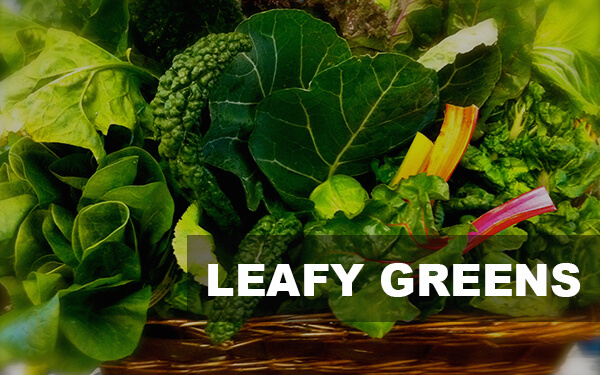 Leafy Greens – Eating a diet rich in dark, leafy greens provides you with vitamin E and the minerals iron, calcium, and phytochemicals, which are key components in fighting inflammation. Always choose dark, leafy greens and cruciferous vegetables over ones with pale leaves’.Nutritional info–(One cup) 70 calories, 0g fat, 4g protein, 10g carbs, 5 g fiber,.Benefits-Kale’s health benefits are primarily linked to the high concentration and excellent source of antioxidant vitamins A, C, and K and sulfur-containing phytonutrients. Carotenoids and flavonoids are the specific types of antioxidants associated with many of the anti-cancer health benefits.
Leafy Greens – Eating a diet rich in dark, leafy greens provides you with vitamin E and the minerals iron, calcium, and phytochemicals, which are key components in fighting inflammation. Always choose dark, leafy greens and cruciferous vegetables over ones with pale leaves’.Nutritional info–(One cup) 70 calories, 0g fat, 4g protein, 10g carbs, 5 g fiber,.Benefits-Kale’s health benefits are primarily linked to the high concentration and excellent source of antioxidant vitamins A, C, and K and sulfur-containing phytonutrients. Carotenoids and flavonoids are the specific types of antioxidants associated with many of the anti-cancer health benefits.
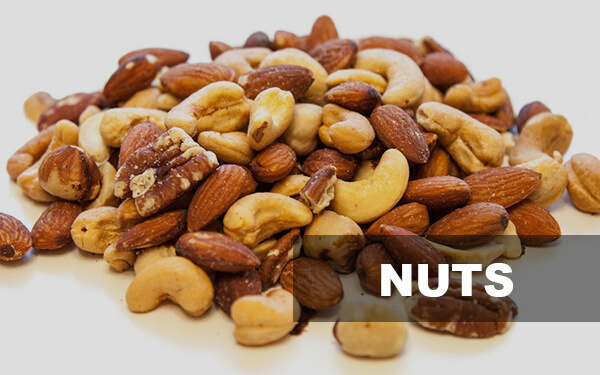 Nuts – When it comes to reducing inflammation with foods, go nuts – literally! Almonds are particularly high in fiber and calcium. Walnuts are rich in omega-3 fats. And all nuts have some type of antioxidants that repair damage caused by free radicals and other forms of inflammation.Remarkably, nuts not only taste great, but they’re loaded with protein, fiber, essential fats, antioxidants and minerals, which also makes them great for you. It seems like every day more and more studies continue to be released extolling the health benefits of eating nuts as a fundamental part of your diet.
Nuts – When it comes to reducing inflammation with foods, go nuts – literally! Almonds are particularly high in fiber and calcium. Walnuts are rich in omega-3 fats. And all nuts have some type of antioxidants that repair damage caused by free radicals and other forms of inflammation.Remarkably, nuts not only taste great, but they’re loaded with protein, fiber, essential fats, antioxidants and minerals, which also makes them great for you. It seems like every day more and more studies continue to be released extolling the health benefits of eating nuts as a fundamental part of your diet.
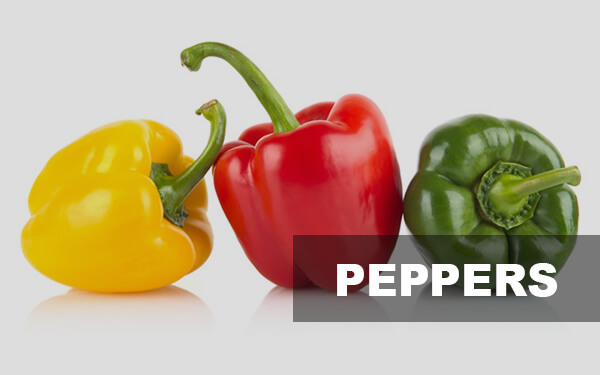 Peppers – Colorful peppers are rich in antioxidant vitamins.These low-starch vegetables are always a better option than potatoes, corn, or rice. Even spicy cayenne and chili peppers contain capsaicin, a chemical used in topical inflammation-fighting creams.If you suffer from rheumatoid arthritis, ask your doctor before indulging in peppers because these nightshade vegetables are thought to conflict with the symptoms.Green peppers are harvested earlier, before they have a chance to turn yellow, orange, and then red. Compared to green bell peppers, the red ones have almost 11 times more beta-carotene and 1.5 times more vitamin C
Peppers – Colorful peppers are rich in antioxidant vitamins.These low-starch vegetables are always a better option than potatoes, corn, or rice. Even spicy cayenne and chili peppers contain capsaicin, a chemical used in topical inflammation-fighting creams.If you suffer from rheumatoid arthritis, ask your doctor before indulging in peppers because these nightshade vegetables are thought to conflict with the symptoms.Green peppers are harvested earlier, before they have a chance to turn yellow, orange, and then red. Compared to green bell peppers, the red ones have almost 11 times more beta-carotene and 1.5 times more vitamin C
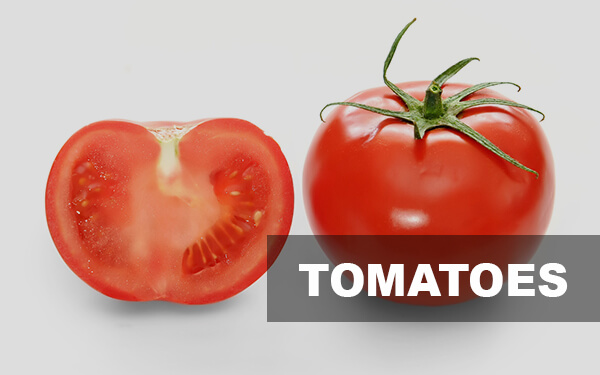 Tomatoes – Another member of the nightshade family, tomatoes are rich in lycopene which is especially useful in reducing inflammation in the lungs.
Tomatoes – Another member of the nightshade family, tomatoes are rich in lycopene which is especially useful in reducing inflammation in the lungs.
Tomatoes are packed with nutrients.
One cup of chopped or sliced raw tomatoes contains:
- 32 calories (kcal)
- 170.14 g of water
- 1.58 g of protein
- 2.2 g of fiber
- 5.8 g of carbohydrate
- 0 g cholesterol
Unlike other raw foods that lose health benefits while cooking, cooked tomatoes contain even more lycopene than ones served raw, such as in salads.
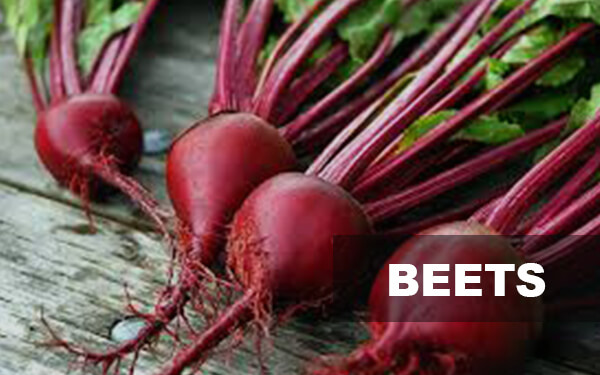 Beets – Both beets and beetroot juice contain fiber, vitamin C, and betalains which not only assist in reducing inflammation but also fight health issues such as cancer and heart disease.They’re not only chock-full of essential everyday nutrients like B vitamins, iron, manganese, copper, magnesium, and potassium, these ruby gems also are a goldmine of health-boosting nutrients that you may not get anywhere else. Here are some great—and surprising—things that happen to your body when you eat beets.
Beets – Both beets and beetroot juice contain fiber, vitamin C, and betalains which not only assist in reducing inflammation but also fight health issues such as cancer and heart disease.They’re not only chock-full of essential everyday nutrients like B vitamins, iron, manganese, copper, magnesium, and potassium, these ruby gems also are a goldmine of health-boosting nutrients that you may not get anywhere else. Here are some great—and surprising—things that happen to your body when you eat beets.
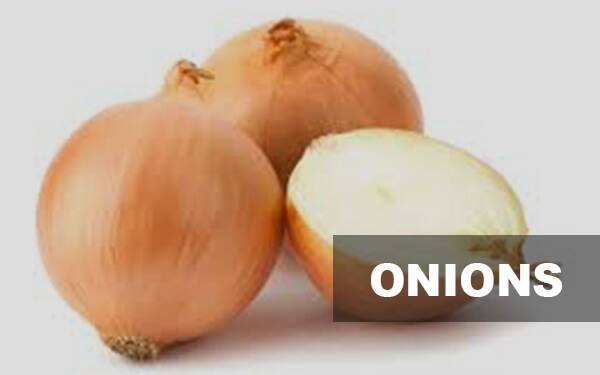 Onions – Onions contain anti-inflammatory chemicals like quercetin and allicin. These chemicals break down inflammatory free radicals, especially ones that attack the respiratory system and cause conditions like asthma and respiratory congestion. Garlic contains similar benefits as well.More than just a tasty culinary plant, the onion contains natural sugar, vitamins A, B6, C and E, minerals such as sodium, potassium, iron and dietry fibre. In addition, onions are a good source of folic acid.
Onions – Onions contain anti-inflammatory chemicals like quercetin and allicin. These chemicals break down inflammatory free radicals, especially ones that attack the respiratory system and cause conditions like asthma and respiratory congestion. Garlic contains similar benefits as well.More than just a tasty culinary plant, the onion contains natural sugar, vitamins A, B6, C and E, minerals such as sodium, potassium, iron and dietry fibre. In addition, onions are a good source of folic acid.
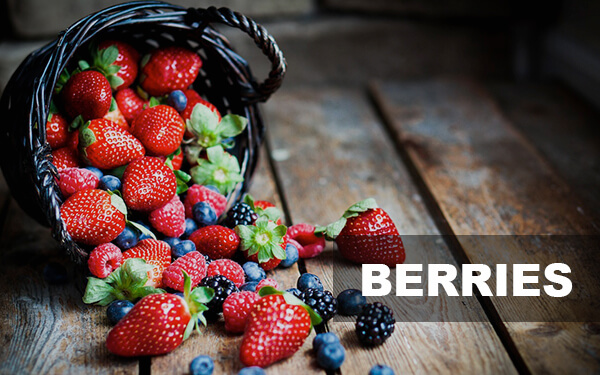 Berries – Last but certainly not least are brightly-colored berries that, despite their small size, pack a big punch against inflammation. Their anti-inflammatory properties, such as anthocyanins, can be seen in their rich hues.
Berries – Last but certainly not least are brightly-colored berries that, despite their small size, pack a big punch against inflammation. Their anti-inflammatory properties, such as anthocyanins, can be seen in their rich hues.
If you are not sure how to reduce inflammation through diet, start at your local farmer’s market. The vendors are almost always local, with locally grown produce. Supporting your local farmer’s market not only supports the local economy, but they are kid friendly – and sometimes dog-friendly, too which means that unlike grocery stores, they are fun for the entire family.
And finally, you can support your efforts for reducing inflammation with foods by also taking a multivitamin that contains antioxidants like glutathione. One such multivitamin is SynergiaGSH, which fights inflammation as well as physical and mental signs of aging.
Guide to OTC Anti-Inflammatories-
Over-the-counter (OTC) medications are drugs you can buy without a doctor’s prescription. Nonsteroidal anti-inflammatory drugs (NSAIDs) are drugs that help reduce inflammation, which often helps to relieve pain. In other words, they’re anti-inflammatory drugs.
Some of the more common OTC NSAIDs are:
- aspirin
- ibuprofen (Advil, Motrin, Midol)
- naproxen (Aleve, Naprosyn)
NSAIDs can be very effective. They tend to work quickly and generally have fewer side effects than corticosteroids, which also help with reduce inflammation. However, before you use an NSAID, you should know about the potential side effects and interactions with other drugs. Read on for this information, plus tips to help you use them safely and effectively.About more information Click Here>
 listen-2-me World News
listen-2-me World News
